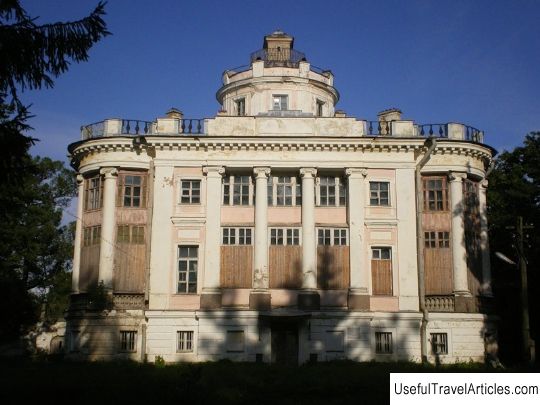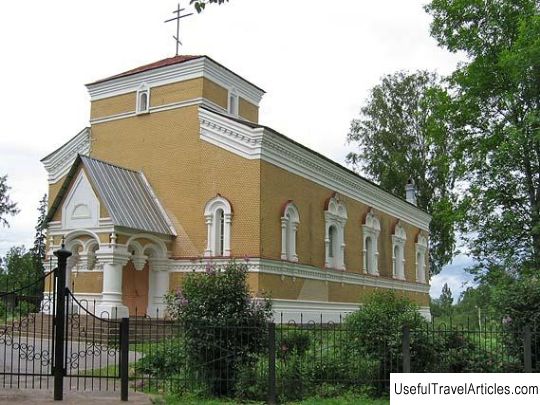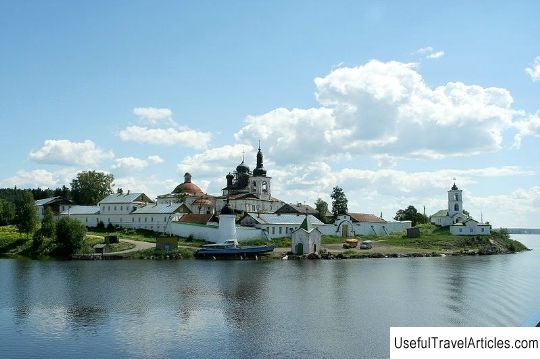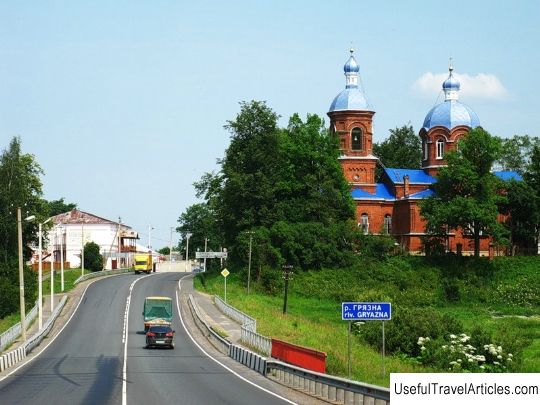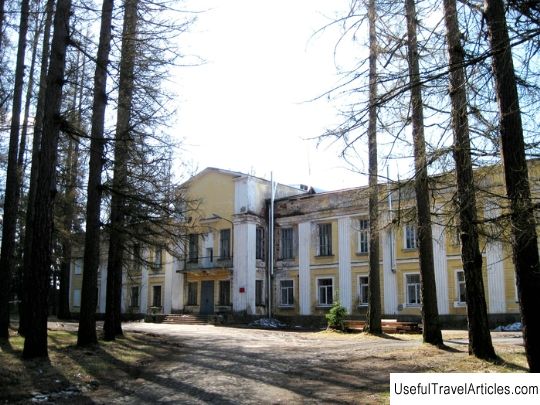Sivoritsy estate description and photos - Russia - Leningrad region: Gatchinsky district
Rating: 8,3/10 (309 votes) 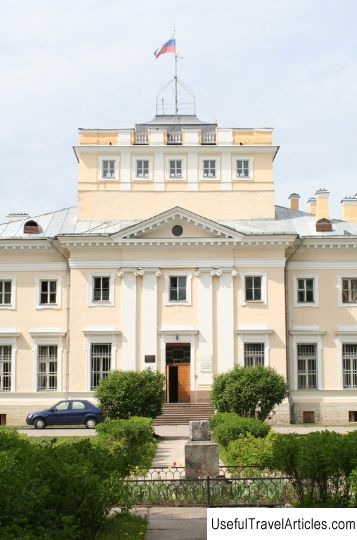
Sivoritsy estate description and photo - Russia - Leningrad region: Gatchinsky district. Detailed information about the attraction. Description, photos and a map showing the nearest significant objects. Photo and descriptionSivoritsy is a former estate of the Demidovs in the Gatchinsky district, located near the village of Nikolskoye. Several centuries ago, the village of Zhivorichi was located on this place, the first mention of which dates back to 1499. After the conclusion of the Stolbovo peace treaty in 1617, these lands began to belong to the Kingdom of Sweden. And on the site of the former Russian settlement, the Sivoritsy manor named in the Swedish manner was formed. When, following the results of the Northern War, Ingermanland was returned to the Russian Empire, the manor was donated by Peter I to F.M. Apraksin, the first admiral of the Russian fleet. Apraksin built a wooden house in Sivoritsy, and a church in a nearby village. But, being quite busy in the service, Admiral Apraksin did not often visit his domain. In 1761. by the descendants of Fyodor Matveyevich, the estate was sold to the Ural breeder and the first director of the Moscow Commercial Bank P.G. Demidov. Unlike the previous owner, he decided to arrange a luxurious estate in Sivoritsy. For this he invited a recognized master of Russian classical architecture I.E. Starov, who was the brother-in-law of Pyotr Demidov. At the same time, the architect worked on the estate of Peter's brother, Alexander Demidov, in Taitsy. Therefore, the manor house in Sivoritsy is so reminiscent of the estate in Taitsy, as well as the estate near Moscow Nikolskoye-Gagarino. The buildings and park in Sivoritsy were created in 1775-76. A gentle slope of the hill, which goes down to the river, was chosen as a place for the construction of the manor house. Sivorke not far from the place of its confluence with Suida. The classic manor layout was adopted - in the shape of the letter "P". In the center was a majestic manor house, on the sides - service premises. An orchard, greenhouses and greenhouses were laid out behind the economic zone. The manor house is a rectangular building in plan on a high basement of two floors. Its facades are decorated with relief window frames, a colonnade and pilasters. The high hipped roof ends with a belvedere - a small turret, where an oak spiral staircase leads. The look of the belvedere was complemented by a sculptural group of cupids and stucco flower garlands. Over time, the modeling of the belvedere was lost. & Nbsp; Wide stone stairs, decorated with granite balls, lead to the front rooms located on the first floor of the house. Decorative columns were installed on the lawns of the estate park Starov, and bridges were thrown across the channels. Only a small part of the park had a regular layout, the rest, its rather vast territory, had a natural landscape character. The smooth relief of the area with a small lake formed from the damming of the Sivorka River contributed to the special expressiveness of the manor park. A wide alley led to the house through the entire park. Only landscapes, a marble sundial and a rotunda have survived from the former beauty of the park. The beauty of the Sivoritsky Park remained captured in the painting by S.F. Shchedrin, which is in the Russian Museum. In 1784, simultaneously with the Starov estate, he built the stone Nikolskaya Church, after which the nearby village was named. Until the 1880s. Sivoritsy continued to be owned by the heirs of Demidov, until, as a result of the ruin of industrialists, the estate was transferred to creditors. After that, it changed owners several times. In 1900 it was bought by the St. Petersburg Zemstvo to open a neuropsychiatric clinic here under the patronage of Empress Maria Feodorovna and the leadership of Professor P.P. Kashchenko. The rebuilding of the estate for medical needs was carried out according to the project of engineer Yu.I. Moshinsky. The main building was redesigned, and additional buildings were erected next to it, water supply and electricity were installed. In 1909, the construction of the hospital campus was completed. The outstanding psychiatrist P.P. Kashchenko was appointed the director of the hospital. This hospital in 1913 was recognized as the best in Europe. Patients felt at ease here, practicing art and occupational therapy. In honor of the first director who worked here until 1918, the hospital in Sivortsy received his name. During the Great Patriotic War, the estate ended up on the territory occupied by the Germans. The invaders killed about 900 patients of the clinic, and set up a hospital here. During the retreat, the Nazis blew up several buildings. In the 1960s. the buildings of the hospital complex have been restored. To the buildings of the 18th century. and buildings of the 20th in 1970. brick buildings were added. Until now, the former house of the Demidovs houses the administration of the clinic and a small museum, on the walls of which there are copies of landscapes with views of Sivorits and some objects that have survived from the past.             We also recommend reading The Art Gallery of Western Australia description and photos - Australia: Perth Topic: Sivoritsy estate description and photos - Russia - Leningrad region: Gatchinsky district. |
